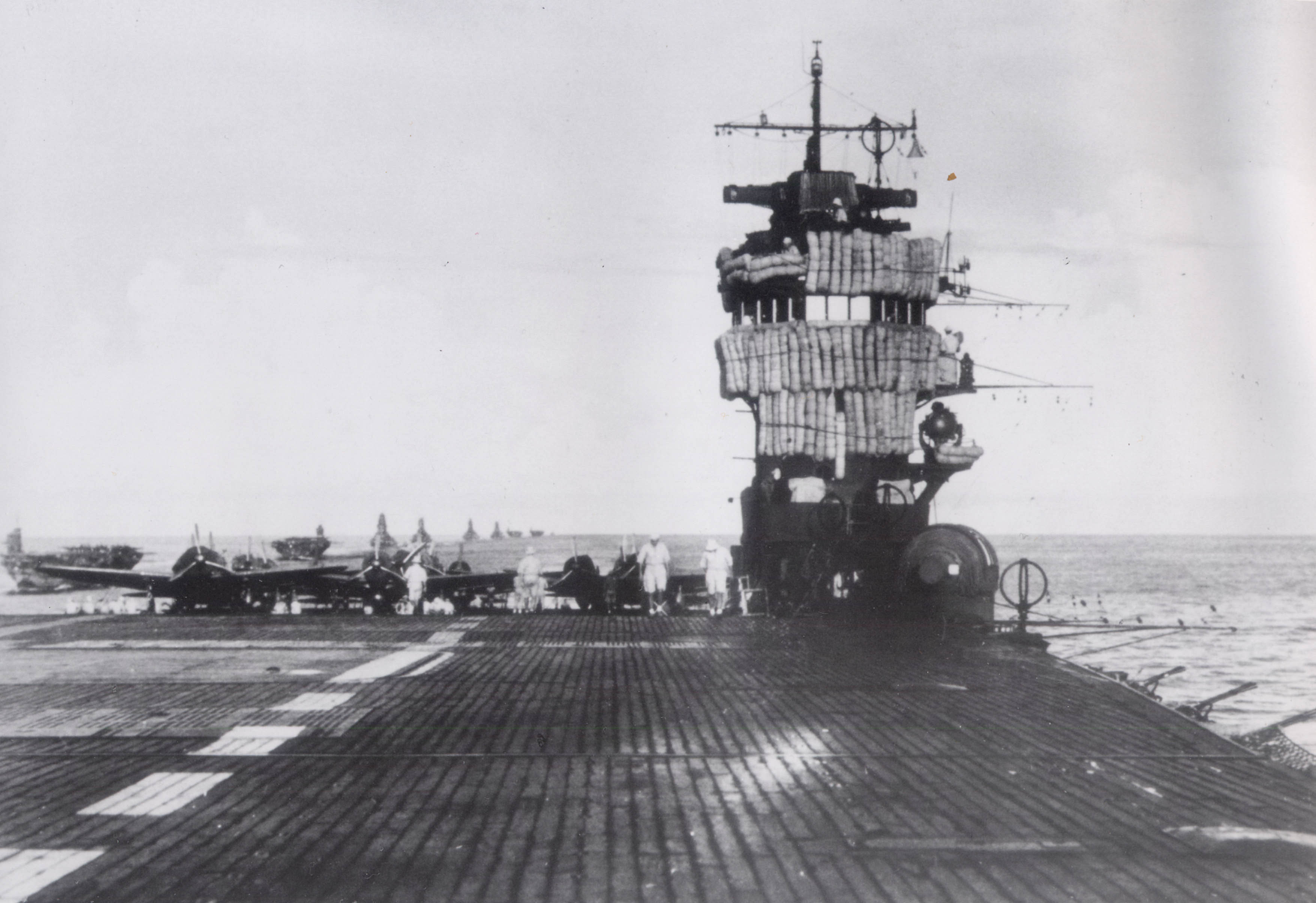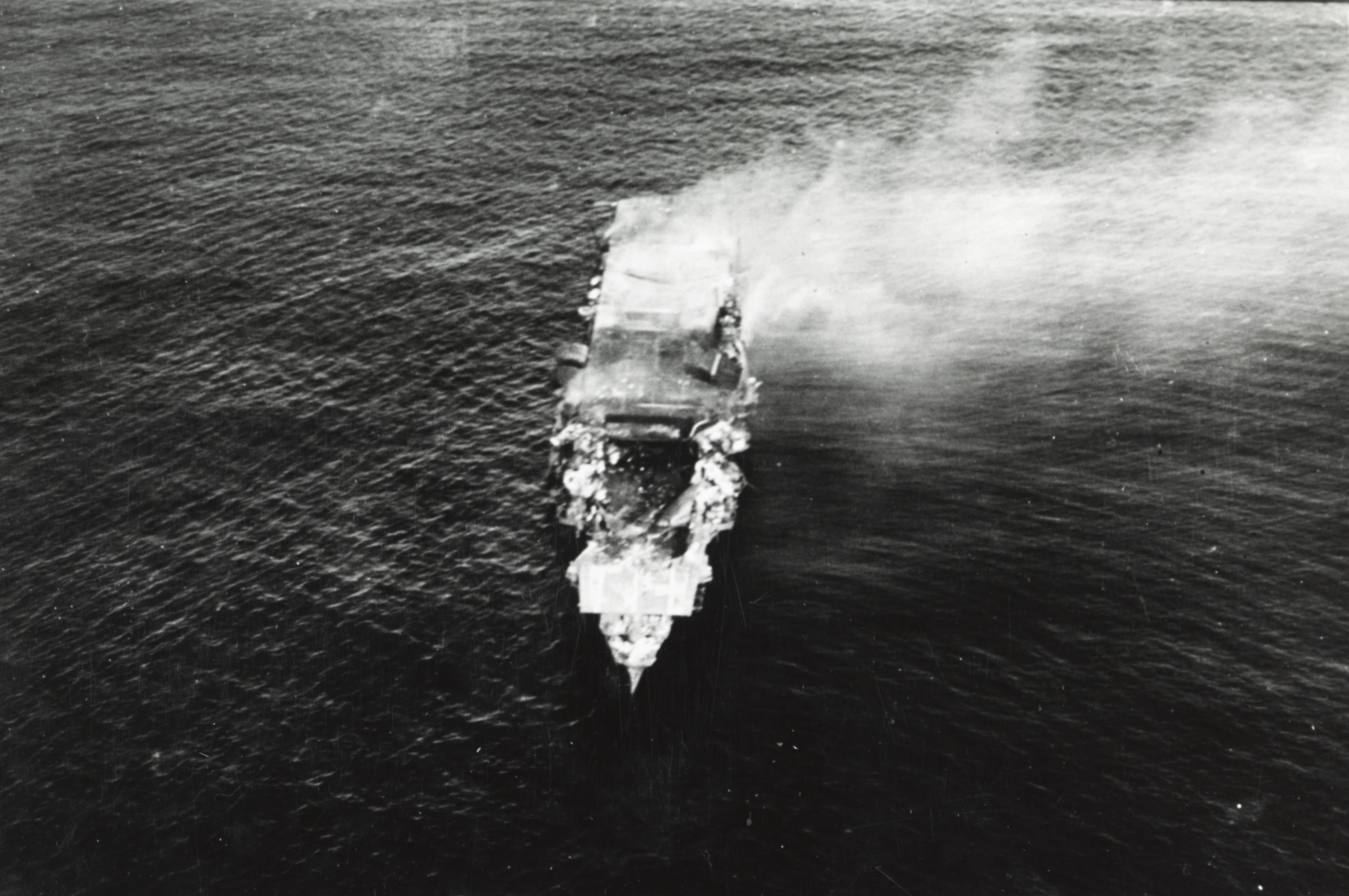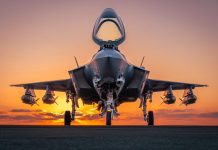After more than 80 years, an international group of experts from the United States and Japan have captured and published footage of an imperial aircraft carrier that was sunk in the infamous ‘Battle of Midway’ in World War II.
232 Times Greater Than US Navy, China’s Shipbuilding Prowess Eclipses The Might Of US – New Report
Soon after it was released, the footage that became a talking point for military experts and enthusiasts alike showed details like an imperial chrysanthemum insignia on the vessel’s bow. The team of experts highlighted that this investigation of the Akagi through such images is a first of its sort, Japan Today reported.
According to the information published by the team, a survey was carried out in the waters southeast of Midway Island from September 8 to 16. The experts used submarines and other equipment to explore areas more than 5,100 meters on the seabed. This was reportedly done at least three times.
The footage comes several years after the sunken carriers were first discovered in 2019 by a group of sea explorers. The Battle of Midway, a significant air and sea battle fought between the US and Japan in 1942, resulted in the loss of seven ships, including the two carriers’ Kaga’ and ‘Akagi’ found within days of each other in 2019.
Both the ships were discovered lying about 18,000 feet underwater within the Papahanaumokuakea Marine National Monument, the world’s largest marine conservation area. Moreover, the crew could locate the Kaga and Akagi using an autonomous underwater vehicle (AUV) equipped with sonar.
Until this discovery, the only ship sunk in the battle to have been discovered was the American vessel USS Yorktown in 1998. This made the discovery of these two imperial carriers even more significant.
After the footage was released, the Japanese Embassy in Washington stated that although Japan and the United States once engaged in combat in the Pacific, they today cooperate as allies and researchers in the same waters.

The poll, it continued, serves as a reminder that “today’s peace and tomorrow’s discoveries are built on the sacrifices of war” and that the two nations must strengthen their partnership. Interestingly, the Japanese Navy does not have an aircraft carrier currently but has a helicopter landing dock.
The footage of Akagi once brought back a painful blow that Japan received in history. For perspective, Midway Islands is an unincorporated territory of the United States in the central Pacific Ocean, 1,300 miles or 2,100 kilometers northwest of Honolulu. It was placed under the control of the US Navy in 1903 and was used as a significant military installation by the service in the Second World War.
The battle of Midway resulted in the deaths of over 2,000 Japanese and 300 US troopers and the sinking of seven ships, four of which were Japanese carriers. America’s victory at Midway, viewed as a turning point in the Pacific War, inflicted massive damage to the Japanese naval prowess.
What Happened In The Battle Of Midway?
One of Japan’s primary objectives during World War II was to dethrone the United States as a Pacific power to capture territory in east Asia and the islands of the southwest Pacific. To seize control of the area and subsequently force a negotiated peace, Japan intended to destroy the US Pacific Fleet, and Midway was to be used as a base for that.
Since the US Navy cryptanalysts had started deciphering Japanese communication codes in early 1942, the United States was aware that the Japanese were planning an assault in the Pacific on a place that they designated as “AF.” When the American base at Midway falsely reported that it was running low on fresh water, it was confirmed that an attack was imminent.
Japan then confirmed that the attack would occur at the Midway Island facility when it sent a message stating that the “AF” was short of fresh water. Subsequently, the American cryptanalysts could also determine the potential date for the attack, i.e., June 4 or June 5.

A significant naval conflict in the Pacific Theatre of World War II, the Battle of Midway, took place from June 4–7, 1942, six months after the attack on Pearl Harbor by the Empire of Japan and one month after the Battle of the Coral Sea.
As predicted by the US forces, the military facility on Midway was attacked by aircraft that took off from four Japanese aircraft carriers early on June 4. The base sustained significant damage, giving a reason to rejoice to the attacking Japanese troops.
However, the Japanese troops were unaware that the US carrier forces were nearby to the east of the island and fully prepared for combat. So, after their initial assault, the Japanese aircraft returned to their carriers to refuel, rearm, and come back for another round of attacks to obliterate the facility.
The Japanese Navy learned that US naval troops were in the region and ready for a retaliatory attack. In what followed, the heavy cruiser Mikuma and the four Japanese fleet carriers — Akagi, Kaga, Soryu, and Hiryu — a part of the six-carrier force that attacked Pearl Harbor six months ago — were sunk by the US naval troops.

TBD Devastator torpedo-bombers and SBD Dauntless dive-bombers from the USS Enterprise, USS Hornet, and USS Yorktown attacked the Japanese fleet. In the combat, the Japanese carriers Akagi, Kaga, and Soryu were struck, destroyed, and left to burn.
The Hiryu was discovered on the afternoon of June 4 by a scout plane from the USS Yorktown, and the Enterprise sent dive-bombers to attack it. The Hiryu was attacked, left smoking, unable to deploy planes, and eventually sank. However, a Japanese submarine later sank the Yorktown on June 7.

The Japanese were forced to give up the fight and flee the following two days due to US forces on Midway and at sea stepping up their assaults. While the United States lost about 362 soldiers, one carrier, one destroyer, and 144 aircraft, the Japanese suffered losses of about 3,057 personnel, four carriers, one cruiser, and hundreds of aircraft.
With this crucial US win, Japan’s expansion in the Pacific was halted, and the US was then able to start reducing the size of the Japanese empire through a protracted campaign of island-hopping invasions and several even more significant naval engagements.
- Contact the author at sakshi.tiwari9555 (at) gmail.com
- Follow EurAsian Times on Google News




